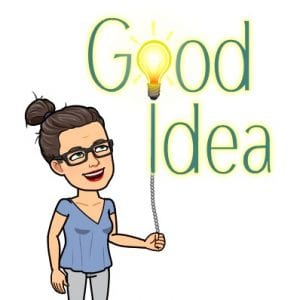Tag: Collaboration
Case Study 2 & 3 Reflections of Group Work

Case Study 2 – online meeting discussion / chat
I found the format for the chat a little disconcerting. When it was time to have my ‘say’ about the issues in the case study, I felt intense anxiety at how fast everyone’s comments were flashing up. I wanted to read them, not only to learn but also to make sure I wasn’t doubling up or saying something totally off the wall compared to what everyone else was saying but it was just too fast. So, I had to just look quickly at my notes and put up a short comment.
Where to from here:
If given the chance in the future, I will try to have something ready that I can just cut and paste quickly.
Case Study 3 – group post
I tried to utilise the strategies for leadership that I felt were important, not in terms of me being the leader, but in terms of what it would take for us to work well together as a group. I wanted to take the time at the beginning to get to know each person in the group.
However, the resulting responses (and almost entire lack thereof) showed that the other members of the group (bar one and myself) did not want to or were not able to take the time to offer any information about themselves. They seemed to simply want to either 1. make it known that they expected us to pick a leader off the cuff (supposably them?) or 2. appropriate time and responsibilities based on their external commitments.
I suppose I went wrong by oversharing or putting nearly everyone off in the way my ‘about me’ was worded in the link to my blog page. Perhaps getting to know each other is seen as a waste of time when everyone else simply wanted to ‘get down to business.’
Overall, I was left feeling out of sorts. As if I’ve missed some social cue, or misread the situation and am now outside the group. I feel as though I’ve set myself apart, rather than made sure I led from the middle, as I had hoped.
Where to from here:
For now, I will let it go and hope for a better result next time. Maybe I will just start smaller with simply a few sentences about myself and hope that others feel comfortable sharing more as we go along…
Case Study 1 – Reflection and Ideas
The background of case study 1 from CSU Interact2 ETL504 Module 1 (Downloaded on 17/7/19)
Case study 1 from CSU Interact2 ETL504 Module 1 (Downloaded on 17/7/19)

Firstly, it must be said that I am vastly under-qualified for the leadership position at the facility in this case study.
- Luckily, it is a hypothetical situation or I might have to have a nervous breakdown as the first thing I would do on Monday morning’s diary entry. Thus, my first reaction is that I need to use something like the graph from Skills You Need to start managing my time more analytically and prioritising tasks more effectively. For example, am I trying to chair too many committees when my staff are falling apart? Am I too busy trying to make myself look good to bond with employees who are running the library, possibly inefficiently?
- Perhaps delegating the sorting of my correspondence, reports, memos and emails into ‘now, soon, later’ by a secretary, who could then create my schedule for the week, would be a good idea. If this isn’t in the budget then I will need to allocate time specifically in each day to organise myself.
- After reading the background of the case study, I am similarly overwhelmed. In my work experience in marketing, I was at a corporation of similar size to this school and it required a Human Resources (HR) team to support the smooth running of the management and staff. We had a vibrant HR manager who, following a corporate restructure, ran a series of ‘meetings’ where we worked together to improve the workplace culture, and I believe this workplace is in serious need of these HR intervention ideas.
- The video from the Bastow Institute’s Tracey Ezard on ‘Building Trust and Collaboration’ (2015) supports this view, offering helpful tips on how to improve the quality of relationships and build trust and risk taking through: discovering each person’s potential and capabilities, admitting my own failings as a leader, appreciating each other and being authentic in what we say and do.
- Some ideas on how to achieve an improved workplace culture specifically would be to: do the VIA character traits survey and discuss the results; Build individual and communal philosophies via the GoogleDocs survey that I created; Then collate the results of these into the school library website or intranet to encourage pride and unity.
- I would also seek to enhance the external support for those staff members who have challenges at home with childcare and children with disability, possibly through a crèche or respite care. (Not sure what to do about the bloke sleeping at his computer in sight of students. Maybe a having a friendly, helpful and private chat about his health and some options for improving his engagement at work would solve the issue?)
- It is clear that some training is necessary and I would look to provide opportunities for the Berry Street Educational Model (BSEM) training for the whole team, but particularly for Liam, Peta, Dani, Victoria, Shelley and Bobbi, who (for various reasons) are not connecting appropriately with students and/or teachers and library staff. While the BSEM training was created to help educators support students with trauma backgrounds, it has the simultaneous effect of building skills in educators like empathy and understanding and the ability to form connections, as well as opening us up to changing our environments, responses and attitudes to better suit the students.
- Similarly, the whole team would benefit from a visit from Keynote Speaker: Rachel Robertson, who explains her ‘No Triangles’ strategy as well as many other useful ideas for improving workplace culture.
- Further training in relevant technology used by the library and possible ideas for additional technology is also needed, particularly for Shelley, Allison, Bobbi & Melissa. This could be achieved in house by training sessions by Lydia, Liam, Derek & Malia. In support of the staff, I should also have an understanding of the relevant technology and use it daily.
- Marlia & Liam could also be trained in the ‘LANS & Networking configurations’ by Derek, who is likely to leave and take his knowledge with him. (And what’s up with that Derek? Do you need to feel more valued or has that ship already sailed?)
- The issue of lack of student and teacher engagement in the library needs a whole team approach. Data needs to be collected, possibly through surveys or programs like Oliver to determine the severity or areas of disengagement. Once the data has been collected and collated, it will need to be analysed by the whole staff and ideas for improving engagement need to be shared with everyone based on and supported by recent information science and educational practise research. One aspect of this would be the whole staff having more input and contributions during the actual teaching of student lessons.
- Finally, due to the constant staff turnover, a lack of clear direction or goals, and a lack of unity, everyone has ambiguous roles and responsibilities-including me. While I see from the diary that I am meeting with them one-on-one, this needs to be formalised into a performance and review schedule where I first meet with everyone around the same time to determine the specific roles and detailed responsibilities of the respective jobs within the sub-groups of the library, e.g. my roles, the TL’s roles, the tech’s roles, the assistant’s roles and the IT department’s roles. Atlassian has a great structure for a team meeting activity to help achieve this. Some 6-12 months afterwards, I could meet with individuals to review their performance and determine their success or needs relating to their roles and responsibilities.
The task at hand is large. I’m glad it is just hypothetical and am looking forward to hearing input from others in this subject on how they would handle it on Monday…
References
BastowInstitute. (2015, July 27). Building Trust and Collaboration – Tracey Ezard [Video file]. Retrieved from https://youtu.be/kUkseAdKyek
Comparing and Contrasting: Herring (2007), Lamb (2011), Purcell (2010) & Valenza (2010)
 The role of the teacher librarian thinking prompts from the ETL401 Module 3.2 discussion forum:
The role of the teacher librarian thinking prompts from the ETL401 Module 3.2 discussion forum:
“Prioritising the TL roles:.. TL roles that might ‘fly under the radar’… Lamb vs Herring vs Purcell vs Valenza… What to give up, according to Lamb and Valenza, in order to be a proactive TL… Purcell’s ideas of the prioritisation of the TL roles vs my ideas…” These things I found difficult to grasp in the form of these questions but I found Karen Balmer’s forum post on ‘Module 3.2 The role of the teacher librarian’ posted on the 21st March 2019, provoked the most thought.
I particularly liked Karen’s statement that “the role has evolved significantly… 21st century skills that TLs should be helping to develop in their students. There also seems to be general agreement with what Herring’s (2007) asse(r)tion that ‘school libraries do not exist in a vacuum…'”
I was concerned by Herring’s statement that unnecessary emphasis is placed on reading for pleasure – as I think Herring has missed the mark, in a pursuit to support teaching information literacy when the aspects of literacy (learning to read, and reading to learn – or reading for pleasure) should in fact be taught together (one purpose, not outweighing the others) and should not be seen as in any way separate. (More on that in this blog post.)
Like Karen Balmer, I agree with Purcell that our role should be that of a team or school (curriculum) leader, (curriculum) partner, information (literacy) specialist, teacher and administrator (of the library and strong teaching and learning) programs.
Finally, Karen and I prefer how Lamb puts being at media specialist of 21st century teaching and learning in the fore-front of the list of roles, including information technologist, administrator and (last but not least) a teacher, with the additional roles of ‘curriculum consultant, community collaborator and digital detective’ as varying in priority on any particular day, depending on the needs of the stakeholders. In this, Lamb identifies how the social aspects of the role, or collaborating with educators as colleagues is vital.
References:
Balmer, K. (2019, March 21) Module 3.2 The Role of the Teacher Librarian [Online Forum comment]. Message posted to: https://interact2.csu.edu.au/webapps/discussionboard/do/message?action=list_messages&course_id=_42380_1&nav=discussion_board_entry&conf_id=_78883_1&forum_id=_147404_1&message_id=_2093678_1
Herring, J. (2007). Teacher librarians and the school library. Retrieved from https://www-sciencedirect-com.ezproxy.csu.edu.au/science/article/pii/B9781876938437500028
Lamb, A. (2011). Bursting with potential: Mixing a media specialist’s palette. Retrieved from http://ezproxy.csu.edu.au/login?url=http://search.ebscohost.com/login.aspx?direct=true&db=a9h&AN=60840783&site=ehost-live
Purcell, M. (2010). All librarians do is check out books, right? A look at the roles of a school library media specialist. Retrieved from http://ezproxy.csu.edu.au/login?url=http://search.ebscohost.com/login.aspx?direct=true&db=eric&AN=EJ907292&site=ehost-live
Valenza, J. (2010). A revised manifesto. Retrieved from http://blogs.slj.com/neverendingsearch/2010/12/03/a-revised-manifesto/
Creating a Collaborative Climate – The Triple C’s
[Reflection of ETL401 & ETL503 (The TL Role in Collaboration)] (*addendum 16 September 2019 for ETL504)
 I think I’ve been pretty clear in my stance on the impact of temporary and casual work environments to the collaborative climate. If not, then I suppose I should mention here how much it wears away at collaboration to have individuals fighting for the renewals of their contracts: completely and utterly.
I think I’ve been pretty clear in my stance on the impact of temporary and casual work environments to the collaborative climate. If not, then I suppose I should mention here how much it wears away at collaboration to have individuals fighting for the renewals of their contracts: completely and utterly.
The casualisation of the teaching workforce, particularly in my personal working context, is not something I am able to change as an individual. Helping create a collaborative climate (despite the political climate) however, I can try to change.
Before we jump head first into collaborating with classroom teachers on an inquiry unit of work, let’s take a step back. I mean, yes we want to design and implement inquiry learning and literature programs and we certainly want to help embed digital formats. But we need to confront the elephant in the room in stead of simply shrugging our shoulders and saying ‘some teachers just don’t want to collaborate.’
I would argue that some teachers haven’t had positive collaborative experiences in the past (experiencing – much like a lot of students must experience – forced compliance rather than collaboration) or some teachers expect judgement in disguise rather than collaboration.
We ran into this in a school where we were trying to roll out Quality Teaching Rounds (QTR). We surveyed the staff to identify their concerns and these were the results:
Q. Why do we have to? (Comfort Zones: Not comfortable being watched / observed / critiqued; Doubt ‘teamwork’ capabilities; Criteria for involvement unclear; Feel pressured to do it).
A. (summarised) Be the change you wish to see in the world. Also, the NSW DET require a colleague observe you once a year so it might as well have a clear structure and limits and offer real improvement to your teaching.
Q. What’s the benefit? (Is there follow up; What do ‘we’ get out of it; Evidence of benefits; How does it improve the school; How valuable is it versus mentoring which we do already).
A. (shown QTR training slides proving benefits based on research)
Q. How could we possibly do it? (Logistics / Resources: What types of lessons have to be observed, eg 1:1, whole class, small group; Time off class; Casuals; Time required for prep work outside school hours).
A. (Thankfully, the principal had budgeted for the resources and did not have a set idea of what sort of lessons were required for observation).
The QTR team did our best with the resources and research provided by the QT Framework training to answer these concerns in a specially allocated staff meeting. We then surveyed the staff to determine their level of interest, which was about 70% in favour, and a few other teachers joined the second ‘Quality Teaching Round.’
Furthermore, in this process and in the readings for ETL401 Module 4, it occurred to me that an aspect of (primary) teaching that impacts collaboration is an ingrained and embedded culture of isolation. A teacher, predominantly alone in a room of students (or a Teacher Librarian on their own in the library) cannot effectively collaborate with other teachers as well as someone working in an office filled with cubicles or a group of engineers on a building site.
Another aspect of collaboration are the social norms of either Australian culture, or the culture of a town or city, or the culture of a school context. An immigrant and possible ASD person myself, I struggle with social norms on a daily basis.
I am also struck by the massive gap in the expectations of our TL role as collaborators, where we are expected to just jump in there and collaborate with teaching and learning programs with people who don’t know anything about us and of whom we also know very little…it is a bit ‘chicken before the egg’!
The OECD-UNICEF (2016) Education Working paper’s ‘dimensions of learning’ for organisation transformation touches on this (developing and sharing a student centred vision, having a culture of support for staff learning opportunities, promoting team collaborative professional development and embedding systems that support it, establishing daily expectations or ‘culture’ of inquiry, innovation and exploration–including staff in leadership roles, and learning with and from larger learning systems outside of the school context or direct governing body).
Logistically though, what does this look like? I love the idea of the ATSI community’s ‘yarning circle’. But how do I help create a ‘yarning circle’ or gathering spot where we can get to know each other and our contexts and socialise professionally? How do I help draw people out of their shells and into the safe environment of a collaborative climate?
Creating a Collaborative Climate (The triple C’s):
I can’t do it alone. There are things the executive must do to help improve the collaborative climate and things that they will need from me as well. However, once I’ve developed a rapport with the principal by helping them achieve their ideas, I will liaise with the principal to allow for time and budget amounts to be determined and allocated to enable some or all of the following of MY (8) ideas for creating a collaborative environment each year as follows:
- In an allocated staff meeting or staff development day, we sit in a ‘yarning circle’ and discuss ourselves, our school and any concerns openly and freely, using the ideas from this link as a guide: ATSI community’s ‘yarning circle’.
- Everyone completes the School Context Survey (draft version also in links on the right side of this blog) either collaboratively or on their own in time provided.
- Everyone takes the VIA Character Survey and shares their top 5 / 10 character traits for the year (they can change slightly each year).
- Everyone completes the Philosophy of Teaching Survey (draft version in links also on the right side of this blog). My own philosophy of Teaching has been updated for 2019 using the survey questions and can be used as a guide.
- A photo of the teacher is either created or supplied with their permission (see #7 below for format ideas) using the Photo Permission Form Template created by the American Library Association (or similar).
- The results of the school context, VIA, and philosophy surveys can then be sent electronically to the TL to be added to a electronic photo of the teacher(s) (with their permission), &/or collated and presented on an intranet or school website (which, unfortunately I do not have at present as I am not attached to a particular school).
- I even have ideas (I have a marketing background, don’t forget!) on what the end result would look like and have pinned these ideas onto my Teacher Spotlight Pinterest board. (This board could also, theoretically, be made available for all of the school staff to edit).
- And finally, (and this is where it gets a bit heavy), introduce Quality Teaching Rounds (in which I am an advocate and trained to deliver) to the school at least once a year if not twice, depending on budget and time allowances.
From here, collaborating on programming and teaching collaborative inquiry units are a walk in the park.
 *16 September 2019 ETL504 addendum: See the template link on the left of the blog for initiating a collaborative inquiry unit with a classroom teacher Created by Christy Roe, based on suggestions from Carr, J. (Ed.), (2008) p.13-14; 28; 39; and Bishop, (2011) p.7.
*16 September 2019 ETL504 addendum: See the template link on the left of the blog for initiating a collaborative inquiry unit with a classroom teacher Created by Christy Roe, based on suggestions from Carr, J. (Ed.), (2008) p.13-14; 28; 39; and Bishop, (2011) p.7.
WHEW! Its a big task. I hope I’m up to the challenge!
References:
Bishop, K. (2011). Connecting libraries with classrooms. Retrieved from ProQuest Ebook Central.
Carr, J. (Ed.). (2008). Leadership for excellence: Insights of the national school library media program of the year award winners. Retrieved from iG Library.
OECD-UNICEF. (2016). What makes a school a learning organisation? A guide for policy makers, school leaders and teachers. Retrieved from https://www.oecd.org/education/school/school-learning-organisation.pdf

